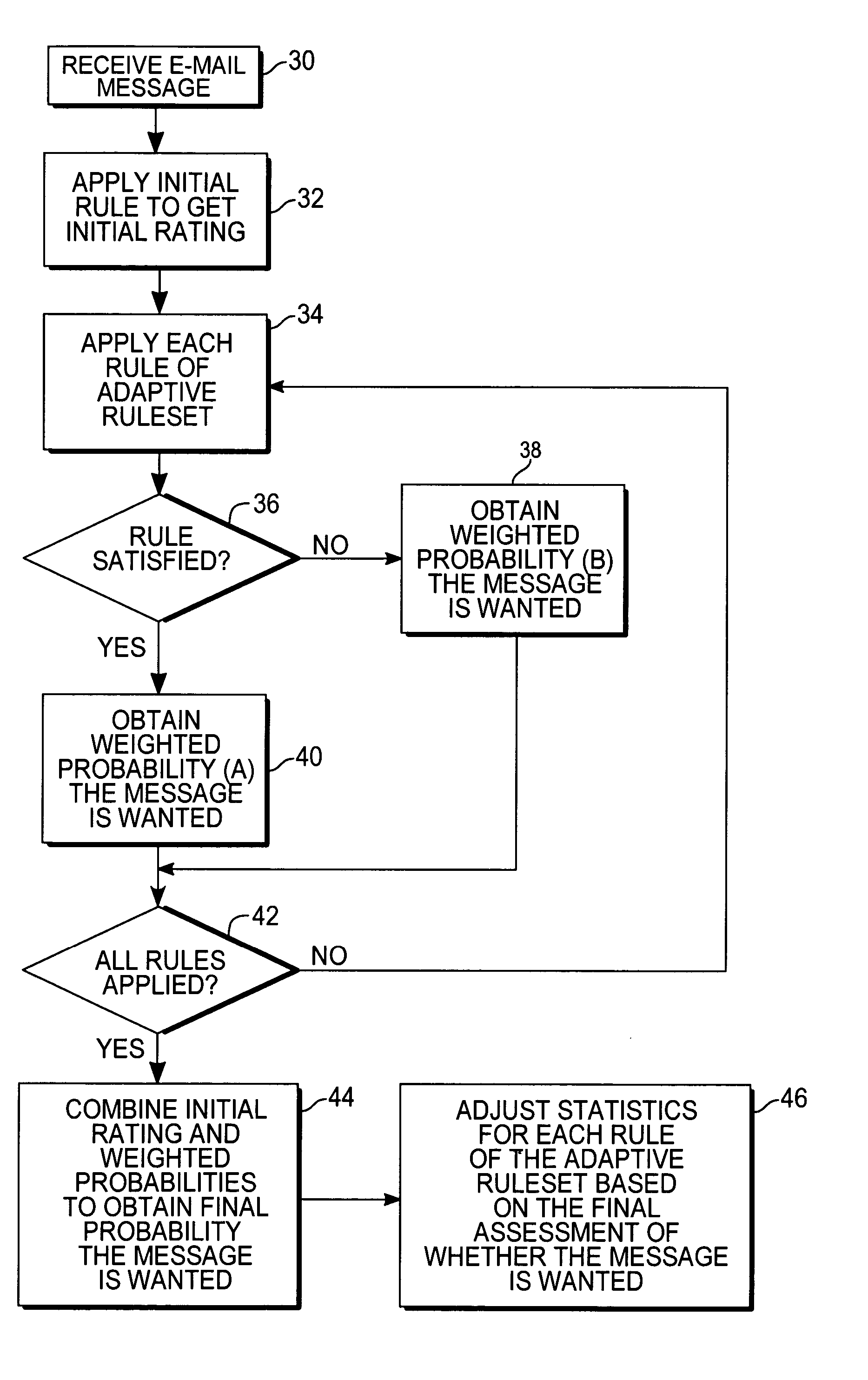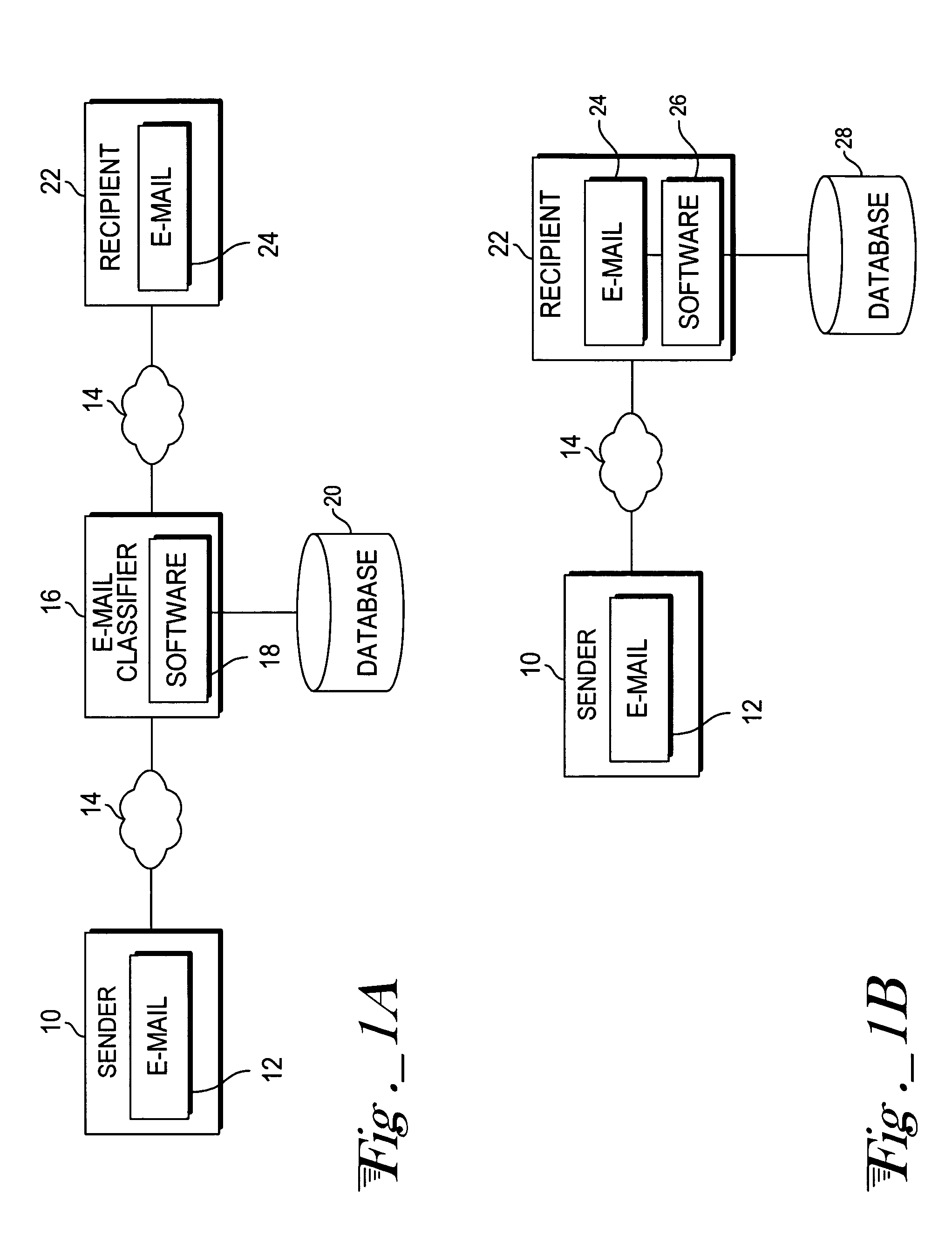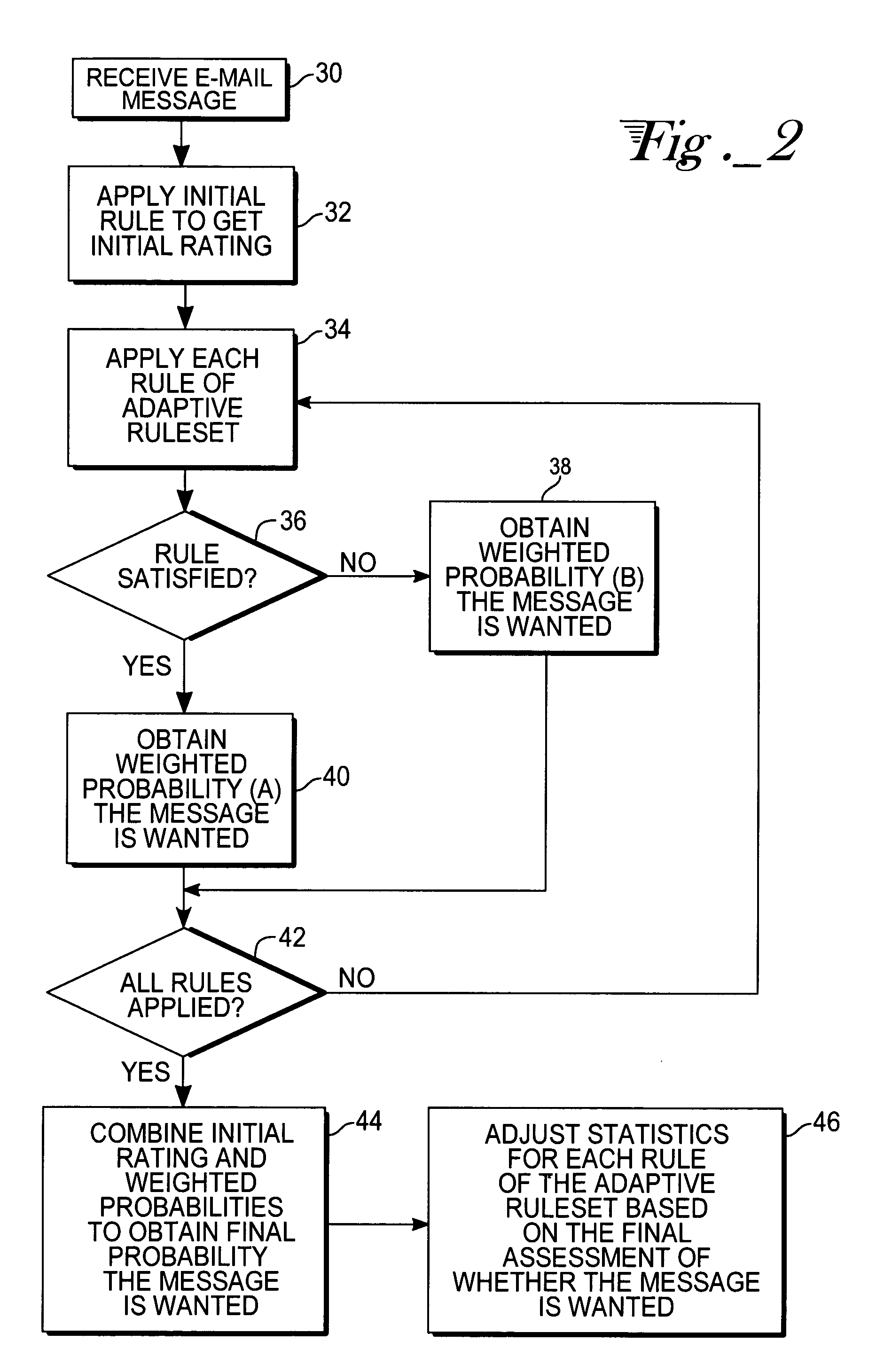E-mail filter employing adaptive ruleset
a technology of adaptive ruleset and filter, applied in the field of software email filters, can solve the problems of reducing the affecting the user's experience, and affecting the user's experience, and achieve the effect of accurate initial rating of the messag
- Summary
- Abstract
- Description
- Claims
- Application Information
AI Technical Summary
Benefits of technology
Problems solved by technology
Method used
Image
Examples
Embodiment Construction
[0017] Referring to FIG. 1a, in one embodiment the e-mail filtering software 18 containing the ruleset for determining if an e-mail message is wanted by its intended recipient 22 may be running at a network device 16 intermediating between the sender 10 (which is running an e-mail software program 12, such as Microsoft Outlook™ or Qualcomm Eudora™) and the recipient 22 (also running an e-mail software program 24). The sender 10, network device 16, and recipient 22 are all in network connection 14 with each other. The network device 16 could be a device dedicated to classifying e-mail or may be any other network device such as an e-mail server. The filtering software 18 is associated with a database 20 for receiving, calculating, and storing statistics related to the ruleset, senders 10, and recipients 22. The database 20 may be running on the network device 16 or connected to the device 16 by a direct or network connection.
[0018] In FIG. 1b, the filtering software 26 containing the...
PUM
 Login to View More
Login to View More Abstract
Description
Claims
Application Information
 Login to View More
Login to View More - R&D
- Intellectual Property
- Life Sciences
- Materials
- Tech Scout
- Unparalleled Data Quality
- Higher Quality Content
- 60% Fewer Hallucinations
Browse by: Latest US Patents, China's latest patents, Technical Efficacy Thesaurus, Application Domain, Technology Topic, Popular Technical Reports.
© 2025 PatSnap. All rights reserved.Legal|Privacy policy|Modern Slavery Act Transparency Statement|Sitemap|About US| Contact US: help@patsnap.com



